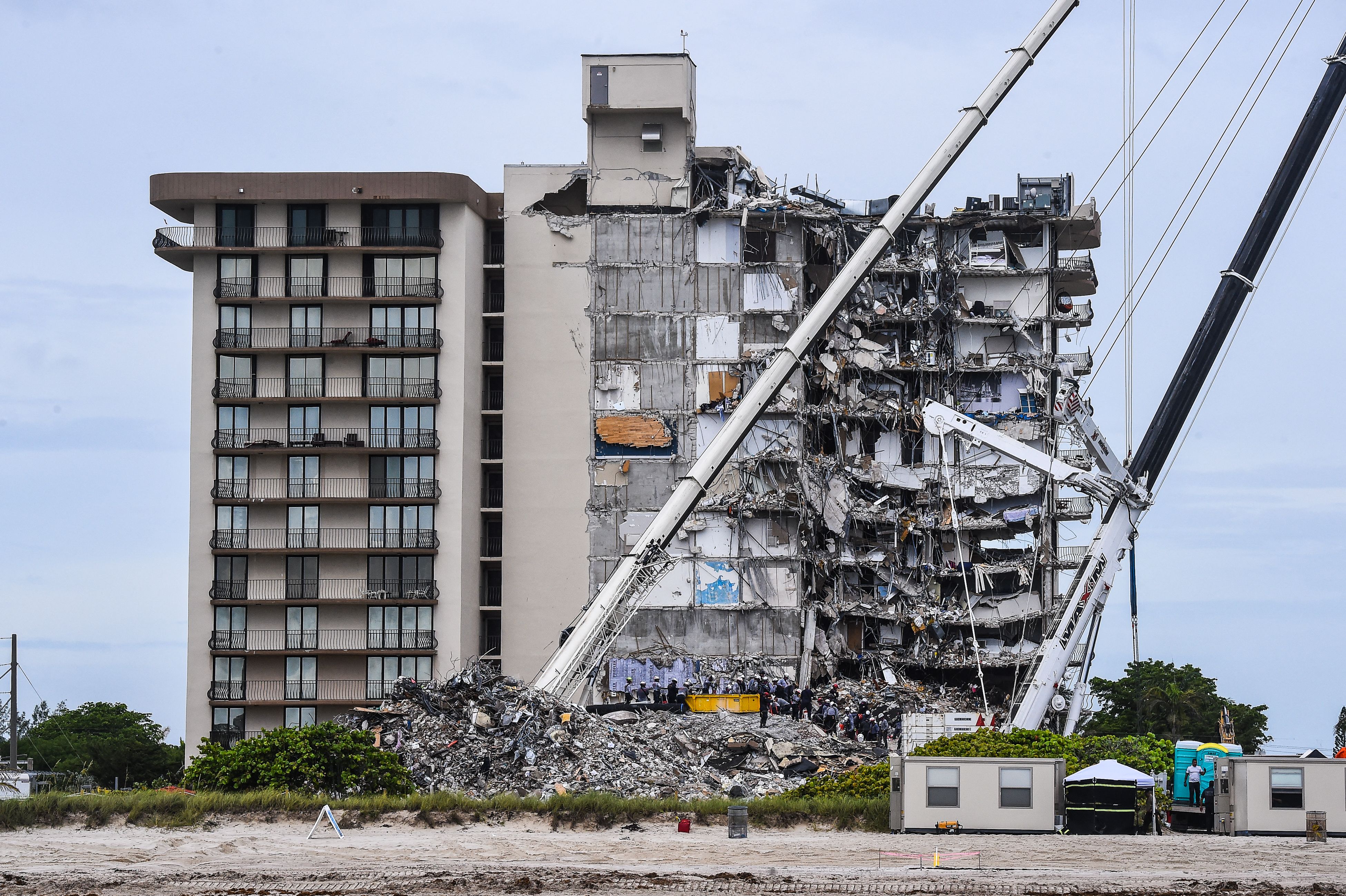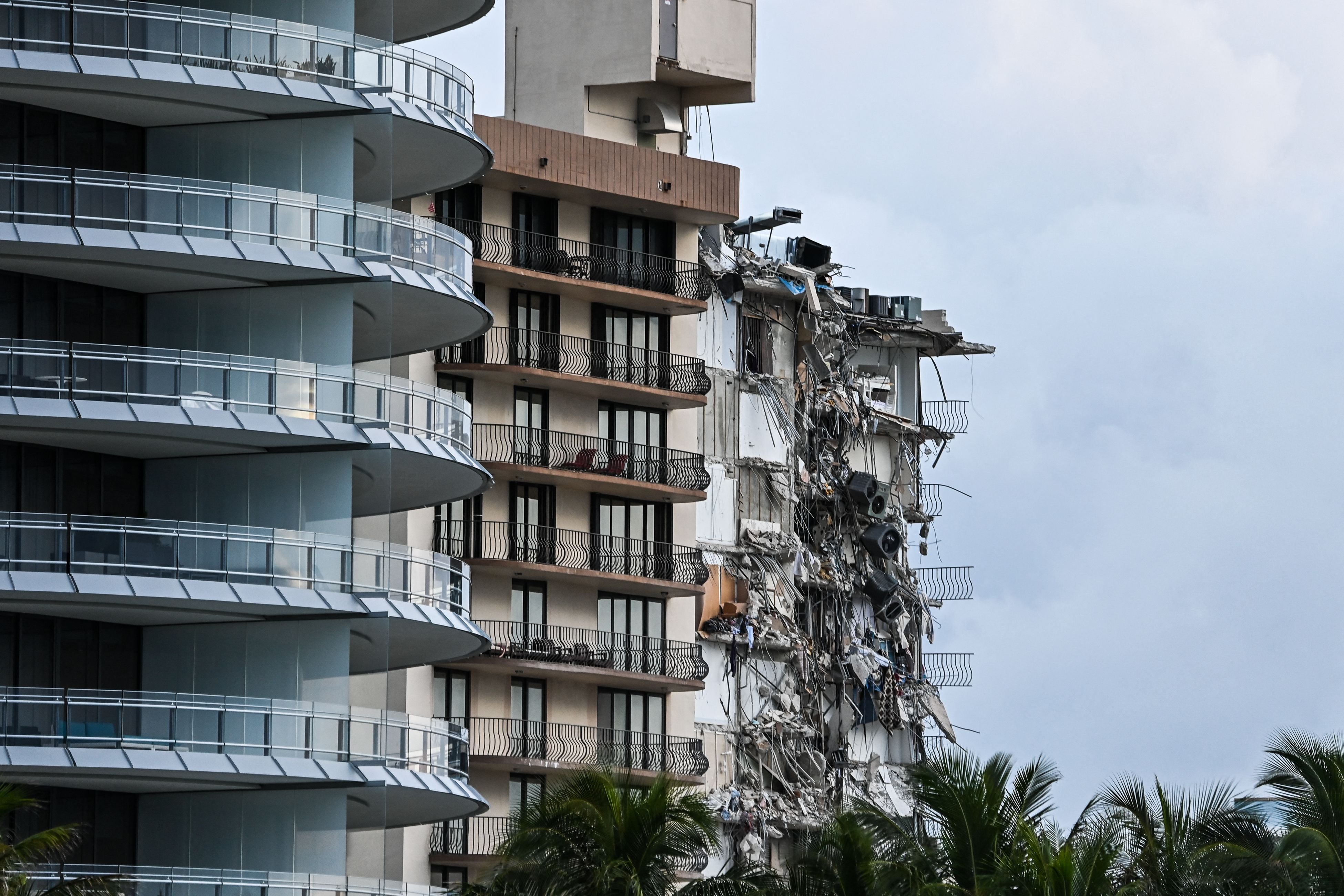Experts don’t believe shock test of new aircraft carrier off Florida coast led to collapse of Miami condo
A 2018 engineering report documented ‘major structural damage’ to the building
Your support helps us to tell the story
From reproductive rights to climate change to Big Tech, The Independent is on the ground when the story is developing. Whether it's investigating the financials of Elon Musk's pro-Trump PAC or producing our latest documentary, 'The A Word', which shines a light on the American women fighting for reproductive rights, we know how important it is to parse out the facts from the messaging.
At such a critical moment in US history, we need reporters on the ground. Your donation allows us to keep sending journalists to speak to both sides of the story.
The Independent is trusted by Americans across the entire political spectrum. And unlike many other quality news outlets, we choose not to lock Americans out of our reporting and analysis with paywalls. We believe quality journalism should be available to everyone, paid for by those who can afford it.
Your support makes all the difference.Seismic experts have rejected theories that tie the collapse of a condo in Surfside to the shock test of a new aircraft carrier conducted by the US Navy off the coast of Florida.
The US Navy had set off a massive explosion in the Atlantic Ocean on 18 June to test the war readiness of its newest aircraft carrier, USS Gerald Ford. The shock trials were conducted to ensure the capability of the nuclear-powered aircraft carrier to withstand battle conditions.
During the trial, the crew detonated almost 40,000 lbs of explosives about 100 miles off Palm Coast, Florida, following which, the coastline registered a 3.9 magnitude earthquake.
Almost a week after the explosion, a 12-storey beachfront condo in Surfside, Floride, collapsed, leaving at least 12 people dead. At least 149 residents are still missing in the wreckage following the 24 June incident, reported AP.
Paul Earle, a Colorado-based seismologist with the US Geological Survey’s National Earthquake Information Centre (NEIC), told the Miami Herald that he does not believe the shock test by US Navy is related to the condo collapse.
“Given the size of the explosion, the distance from the building, and the time between the explosion and the collapse, we do not see any reasonable mechanism for the Navy explosion on June 18 to have triggered the collapse of the Miami Beach-area condo on June 24,” he was quoted as saying. “There are about 300 earthquakes of similar size to the Navy explosion in the contiguous US every year, none of which have triggered a major building collapse.”

Lieutenant Commander Desiree Frame, public officer for the USS Gerald R Ford, also rejected the premise on Monday.
“We have seen nothing that will correlate the shock trial test with the terrible event last week in South Florida,” she was quoted as saying by the Miami Herald. “Certainly, our thoughts and prayers go out to everybody affected by that.”
She further told the paper that they consider a lot of factors before choosing the testing site, to ensure that they are as safe as possible.
“We know we need to do this kind of testing for the hull of our major ships like aircraft carriers, that it’s an important opportunity to evaluate the structural integrity of the hull, and its ability to handle a blast of that size, but in choosing the location, the depth of the water, the time of day, marine life migration patterns, etc. There are a lot of factors that are considered to make sure that it’s as safe as it can possibly be,” she said.
Meanwhile, a 2018 engineering report documented “major structural damage” to the building and noted “abundant cracking” in concrete beams and walls.

The New York Times reported that the building was about to undergo extensive repair for the corrosion as a part of the structural recertification requirement 40 years after its construction.
However, experts believe that there are more factors at play that led to the collapse of the building. Using space-based radar to examine the flooding potential in the Miami Beach area, researchers found that the condo was on land that was sinking in ways that other surrounding properties were not, reported the NYT.
Join our commenting forum
Join thought-provoking conversations, follow other Independent readers and see their replies
Comments